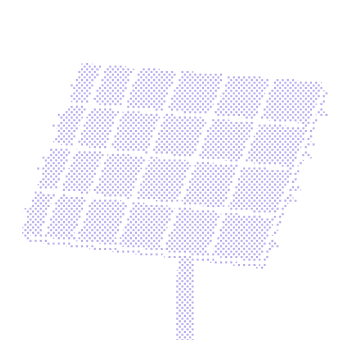How to optimise your solar cabling and reduce cable loss


Every meter of cable on a solar farm represents a critical design decision: effective wire sizing and streamlined layout are essential to minimize resistance losses and maximize the power delivered to the grid.
When it comes to solar energy, modules, panels and inverters are undoubtedly important, but they alone cannot distribute electricity. Cables are one of the essential components of a solar park since they ensure the energy produced by the panels can be safely and properly transported.
However, despite the growing interest in solar energy, the photovoltaic cables are a fairly recent addition to the industry. Solar cables have their own set of rules, from safety regulations to upkeep, and it’s essential to select the cable fitting for each specific project and provide suitable maintenance to ensure maximum productivity.
Basic introduction to solar cabling
Solar cables are made to be used exclusively with solar energy. By its definition, PV cable is a group of smaller wires covered by insulation. The wires can use aluminum or copper as conducting material, but commercial projects often use aluminum wires inside the cables, which is a less expensive option.
PV cables are flexible, resistant to direct sunlight or moisture, and can withstand strong heat. They are made with solar panels in mind, so usually they have the same lifespan as the rest of the equipment. One of the main elements that sets PV cables apart from the regular ones is the insulation type, since regular insulation is built to last half the lifespan of the solar module, which means engineers would have to account for replacement expenses.
Engineers also need to pick a suitable cable size for the park. It should have enough length to connect various components of a PV system, as well as reflect the capacity of the PV module. Higher capacity modules or the longer distance between components would require a thicker cable in order to avoid overheating. Therefore, it’s important to consider the cabling requirements during the planning stage of the park in order to avoid re-installations or high maintenance costs.
Benefits of working with aluminum cables
Aluminum cables are lighter compared to copper ones, but the conductivity of both types remains largely the same. This makes aluminum a preferable material for larger cables since they are easier to handle.
Copper cables have a slightly higher conductivity, they are more flexible yet more expensive than aluminum cables, especially in large-scope projects. The price of aluminum is lower and more stable than copper, which ensures a somewhat consistent cost of maintenance.
Aluminum cables are also relatively resistant to corrosion. Some of the drawbacks of this material are lower tensile strength compared to copper and this type of cables have larger conductors which require larger raceways.
However, aluminum cables need more maintenance than copper ones, since aluminum’s expansion and contraction cycles can loosen connections over time.
What's a BLA system?
Big Lead Assembly (BLA) combines the functionality of cable assemblies, combiner boxes, external fuses, and re-combiners. It is able to transmit power from the solar panel to the inverter, disregarding some of the traditional components, such as combiner boxes and in-array trenching. BLA is part of BOS or Balance of System, which encompasses everything in a PV system aside from modules.
Despite the growing popularity of renewable energy, the construction of new solar parks remains a costly endeavor, mainly due to the equipment that needs to be installed. BLA eliminates some of the O&M costs associated with solar parks and helps manage general BOS expenses.
Typical BOS systems need to run long cables across great distances and often require manual connection for their components. BLA is installed above ground, so there’s no need to create trenches for cables. It features a plug-and-play connection and eliminates the need for costly, specialized work. It can also be installed faster than regular BOS and requires fewer materials, making it less costly.
Cables in a tray vs. underground cables
A cable tray system is used to securely fasten or support cables. These systems are considered flexible and often have lower installation costs. Cable trays also facilitate the movement or addition of equipment with relative ease. Furthermore, they keep the wires and cables neatly organized, and provide security as it ensures none of the cables are left on the ground where they are vulnerable to various damages.
In parks where using overhead construction is impractical, underground cables are used. They consist of one or several cores containing copper or aluminum conductors. This type of cable must be selected according to a park's specific requirements, including system voltage and current-carrying capacity.
Initially, underground cables can be expensive, and they need to be buried, which also decreases their flexibility should any changes to the park occur. However, they are not as susceptible to damage from severe weather events and pose no danger to wildlife.
Cable maintenance
Solar parks are often built in open areas, and PV cables need to withstand harsh environmental conditions. While all solar parks should adhere to strict regulations to ensure the longest possible life cycle, there are additional tips for solar cables that can help mitigate maintenance issues.
It’s advisable to use metal clips to keep the cable attached to the panel. They can keep photovoltaic cables from bending out of shape, which can cause short circuits. Using cheap or unfit materials can increase the park’s overall expenses in the long run.
Cable management also includes the placement of the cables. If left loose, it’s possible that someone might trip over the cable, disrupting it or causing a shortage. The cables themselves can be buried or trenched to keep them from being damaged, but this method can get expensive should the park have the capacity to increase in size. There’s also an option to hang the PV cables, which places them in an overground formation and makes them easier to manage compared to trenching.
Preparing your cable design with PVcase
Since PV cables are an essential part of any solar park, their planning is crucial: if cables are too long or the lines are too short, they become a wasteful expense. PVcase enables engineers to accurately estimate the number and length of cables required to connect all components in the park.
Moreover, PVcase facilitates calculations for DC and AC cabling in fixed-tilt systems, working with both automatic and semi-automatic cabling. The automatic function connects all available components, while semi-automatic cabling allows engineers to generate specific cabling scenarios. The automatic calculations function displays the optimal layout for the cables, considering the distance between components and the number of viable trenches.
Finally, PVcase also allows you to draw manual trench lines, which can be used during the planning phase.


See it for yourself
Turn complexity into clarity and confidently move your solar project forward


